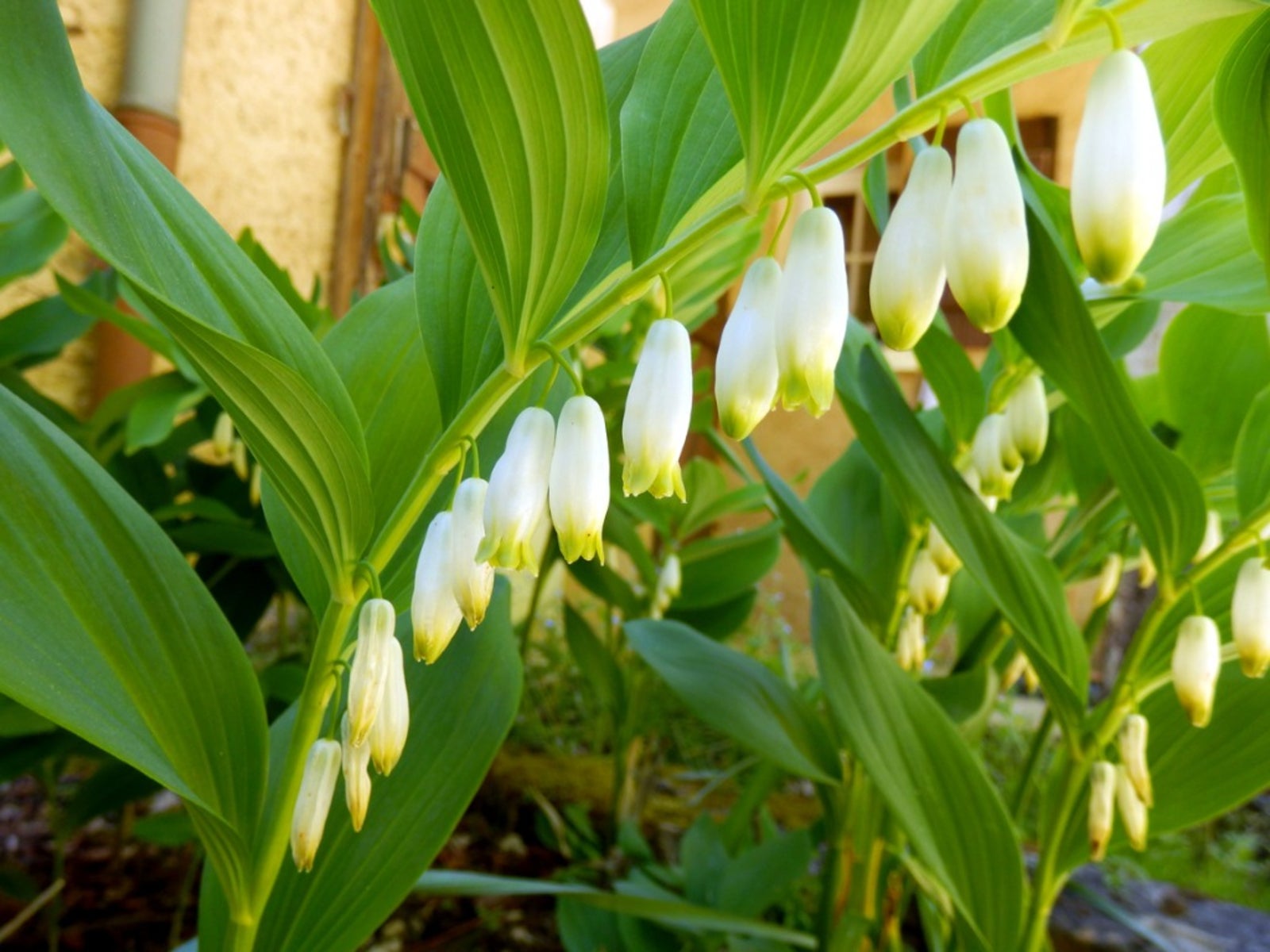Solomon's Seal Info - Caring For A Solomon's Seal Plant


When you're planning a garden in the shade, the Solomon's seal plant is a must have. I recently had a friend share some of the fragrant, variegated Solomon's seal plant (Polygonatum odoratum ‘Variegatum') with me. I was happy to learn it is the 2013 Perennial Plant of the Year, so designated by Perennial Plant Association. Let's learn more about Solomon's seal growing.
Solomon's Seal Info
Solomon's seal info indicates that scars on the plants where leaves have dropped look like the sixth seal of King Solomon, hence the name. The variegated variety and the green Solomon's seal plant are true Soloman's seal, (Polygonatum spp.). There is also a widely grown False Solomon's seal plant (Maianthemum racemosum). All three varieties were previously of the Liliaceae family, but the true Solomon's seals were recently moved to the Asparagaceae family, according to Solomon's seal info. All types perform best in shady or mostly shaded areas and are typically deer resistant. True Solomon's seal plant reaches 12 inches (31 cm.) to several feet (1 m.) in height, blooming in April through June. White bell-shaped blossoms dangle below attractive, arching stems. Flowers become bluish black berries in late summer. The attractive, ribbed foliage turns a golden yellow color in autumn. False Solomon's seal has similar, opposite leaves, but flowers on the end of the stem in a cluster. False Solomon's seal growing info says the berries of this plant are a ruby red color. The green leaved specimen and False Solomon's seal are native to the United States, while variegated types are native to Europe, Asia, and the United States.
How to Plant a Solomon's Seal
You may find some Solomon's seal growing in wooded areas of USDA Hardiness Zones 3 through 7, but don't disturb the wild plants. Purchase healthy plants from a local nursery or garden center, or get a division from a friend to add this interesting beauty to the woodland garden. Learning how to plant Solomon's seal simply requires burying a few of the rhizomes in a shaded area. Solomon's seal info advises leaving plenty of room for them to spread when initially planting. These plants prefer moist, well draining soil that is rich, but are drought tolerant and can take some sun without wilting. Caring for a Solomon's seal requires watering until the plant is established.
Caring for Solomon's Seal
Caring for a Solomon's seal is relatively easy. Keep the soil consistently moist. There are no serious insect or disease issues with this plant. You'll find them multiplying by rhizomes in the garden. Divide as needed and move them to other shady areas as they outgrow their space or share with friends.
Sign up for the Gardening Know How newsletter today and receive a free copy of our e-book "How to Grow Delicious Tomatoes".

Becca Badgett was a regular contributor to Gardening Know How for ten years. Co-author of the book How to Grow an EMERGENCY Garden, Becca specializes in succulent and cactus gardening.